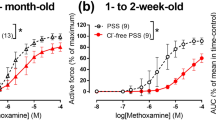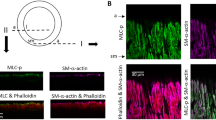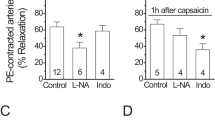Abstract
SUBENDOTHELIAL cushions consisting of longitudinally running smooth muscle fibres inside the circular muscle coat have now been described in the arteries of many organs under the names of ‘intimapolster’, ‘coussinets’, etc.; but the only report of their presence in the arteries of the eye appears to be that of Gallas1, who found them in the long, and less regularly the short, posterior ciliary arteries of man.
This is a preview of subscription content, access via your institution
Access options
Subscribe to this journal
Receive 51 print issues and online access
$199.00 per year
only $3.90 per issue
Buy this article
- Purchase on Springer Link
- Instant access to full article PDF
Prices may be subject to local taxes which are calculated during checkout
Similar content being viewed by others
References
Gallas, J., Biologicke Listy, Prague, 29/3, 129 (1948) (abstract in Excerpta Medica, 3/1353; 1949).
Wolff and Davies, Brit. J. Ophthal. (Nov. 1931).
Author information
Authors and Affiliations
Rights and permissions
About this article
Cite this article
MOFFAT, D. A Regulatory Mechanism in the Posterior Ciliary Arteries of the Dog. Nature 169, 1015–1016 (1952). https://doi.org/10.1038/1691015a0
Issue Date:
DOI: https://doi.org/10.1038/1691015a0
This article is cited by
-
Intimal cushions in ciliary arteries of the dog
Experientia (1974)
Comments
By submitting a comment you agree to abide by our Terms and Community Guidelines. If you find something abusive or that does not comply with our terms or guidelines please flag it as inappropriate.



